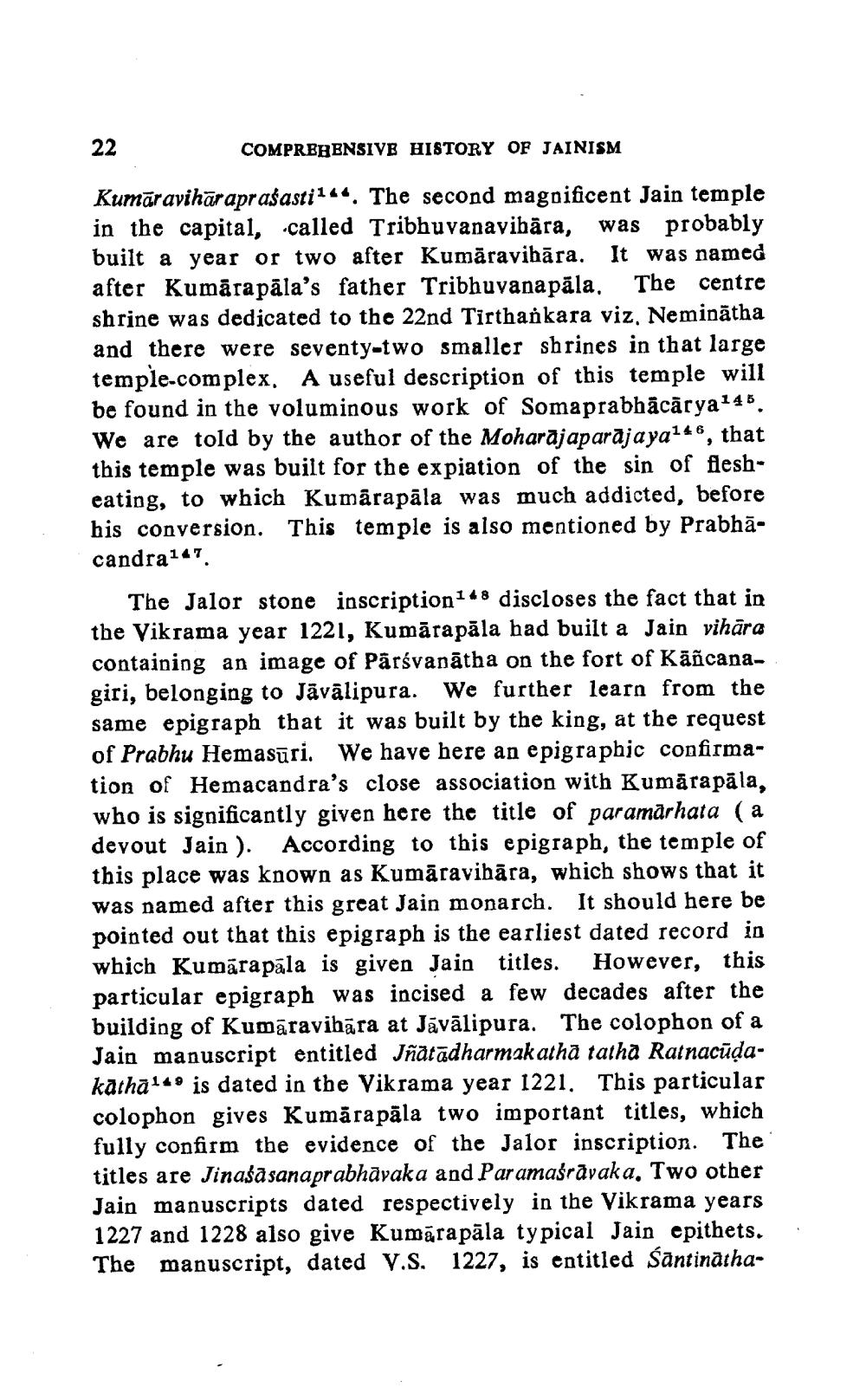________________
22
COMPREHENSIVE HISTORY OF JAINISM
Kumāravihāraprasasti14. The second magnificent Jain temple in the capital, called Tribhuvanavibāra, was probably built a year or two after Kumāravibāra. It was named after Kumārapāla's father Tribhuvanapāla. The centre shrine was dedicated to the 22nd Tirthařkara viz. Neminātha and there were seventy-two smaller shrines in that large temple-complex. A useful description of this temple will be found in the voluminous work of Somaprabhācārya145. We are told by the author of the Moharājaparājaya146, that this temple was built for the expiation of the sin of flesheating, to which Kumārapāla was much addicted, before his conversion. This temple is also mentioned by Prabhācandra147.
The Jalor stone inscription 148 discloses the fact that in the Vikrama year 1221, Kumārapāla had built a Jain vihāra containing an image of Pārsvanātha on the fort of Kāñcanagiri, belonging to Jāvālipura. We further learn from the same epigraph that it was built by the king, at the request of Prabhu Hemasūri. We have here an epigraphic confirmation of Hemacandra's close association with Kumārapāla, who is significantly given here the title of paramārhata (a devout Jain ). According to this epigraph, the temple of this place was known as Kumāravibāra, which shows that it was named after this great Jain monarch. It should here be pointed out that this epigraph is the earliest dated record in which Kumāra pāla is given Jain titles. However, this particular epigraph was incised a few decades after the building of Kumāravihāra at Jāvālipura. The colophon of a Jain manuscript entitled Uñätādharmakatha tatha Ratnacūdakathāliis dated in the Vikrama year 1221. This particular colophon gives Kumārapāla two important titles, which fully confirm the evidence of the Jalor inscription. The titles are Jinaša sanaprabhāvaka and Par amaśravaka, Two other Jain manuscripts dated respectively in the Vikrama years 1227 and 1228 also give Kumārapāla typical Jain epithets. The manuscript, dated y.s. 1227, is entitled śāntinātha




